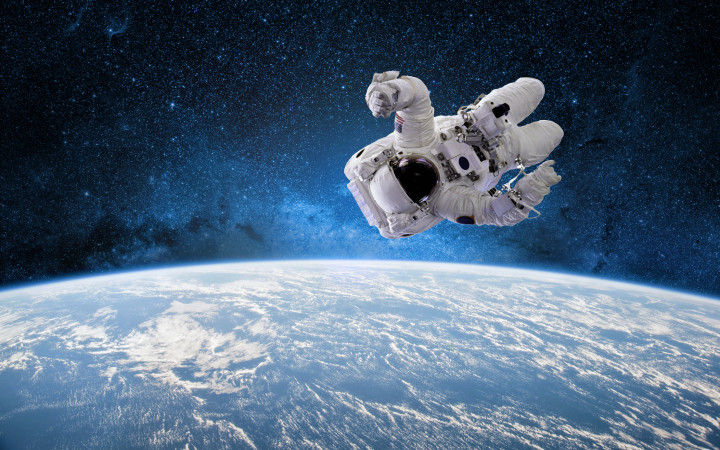Today’s Wonder of the Day was inspired by shenderek. shenderek Wonders, “Can germs live in outer space?” Thanks for WONDERing with us, shenderek!
Do you wash your hands regularly? We hope so! Everyone’s hands get dirty during the day. They can be covered with germs that can make us sick. Washing your hands with soap and water helps keep you and those around you healthy.
Some people really hate germs. They avoid them at all costs. These people are often called germaphobes, but the proper name for this phobia is mysophobia.
If you had mysophobia, where might you go to be safe from germs? Some people might think outer space would be a good place to go. After all, there is no air in space. And all that radiation would kill off all the germs, right?
The truth may surprise you. In fact, it turns out that over 250 different species of bacteria and fungi can survive in outer space. Even more shocking, they actually thrive there.
For example, the Russian space station Mir encountered problems with a film growing over its windows. This hurt the crew’s ability to see while in orbit. Upon its return to Earth, scientists were shocked to find many bacteria and fungi covering the window.
Moreover, the small organisms had done more than just coat the window and block astronauts’ views of space. They had actually damaged the window. This concerned scientists. The window was made of quartz glass in a titanium frame encased in enamel. Scientists thought the windows could withstand just about anything.
Closer examination of the Mir space station revealed that the creatures had also harmed electronic equipment by rusting copper cables. Scientists also found fungi coating several other surfaces.
Scientists were so surprised because space vehicles are cleaned with toxic gases before being sent into space. How did these fungi and bacteria survive? Experts think they must have hidden in areas where gas could not reach. But how did they survive and thrive once in outer space?
Scientists think that bacteria come out of hiding once in outer space. In a sterile environment without other organisms around, they multiply and thrive. Instead of killing them, cosmic radiation may also help them to mutate. They may be able to grow faster than they normally could on Earth.
These findings were supported by recent experiments done on the International Space Station (ISS). Bacteria-covered rocks were put on the outside of the ISS. Scientists hoped to learn how they would react to the conditions of outer space. They wanted to see if the bacteria could survive temperature swings, lack of air, and contact with ultraviolet light and cosmic radiation.
Some bacteria did succumb to these harsh conditions. But a group of bacteria known as OU-20 survived for over a year and a half on the outside of the ISS! Researchers now have samples of these hardy survivors back on Earth for further study.
What can scientists learn from these germs that thrive in outer space? Only time will tell. But for now, they seem to be a sign that at least some Earthlings can live beyond the blue planet!
Standards: NGSS.LS4.C, NGSS.LS4.D, CCRA.L.3, CCRA.L.6, CCRA.R.1, CCRA.R.2, CCRA.R.4, CCRA.R.10, CCRA.SL.1, CCRA.SL.2, CCRA.W.2, CCRA.W.3, CCRA.W.9, CCRA.L.1, CCRA.L.2




